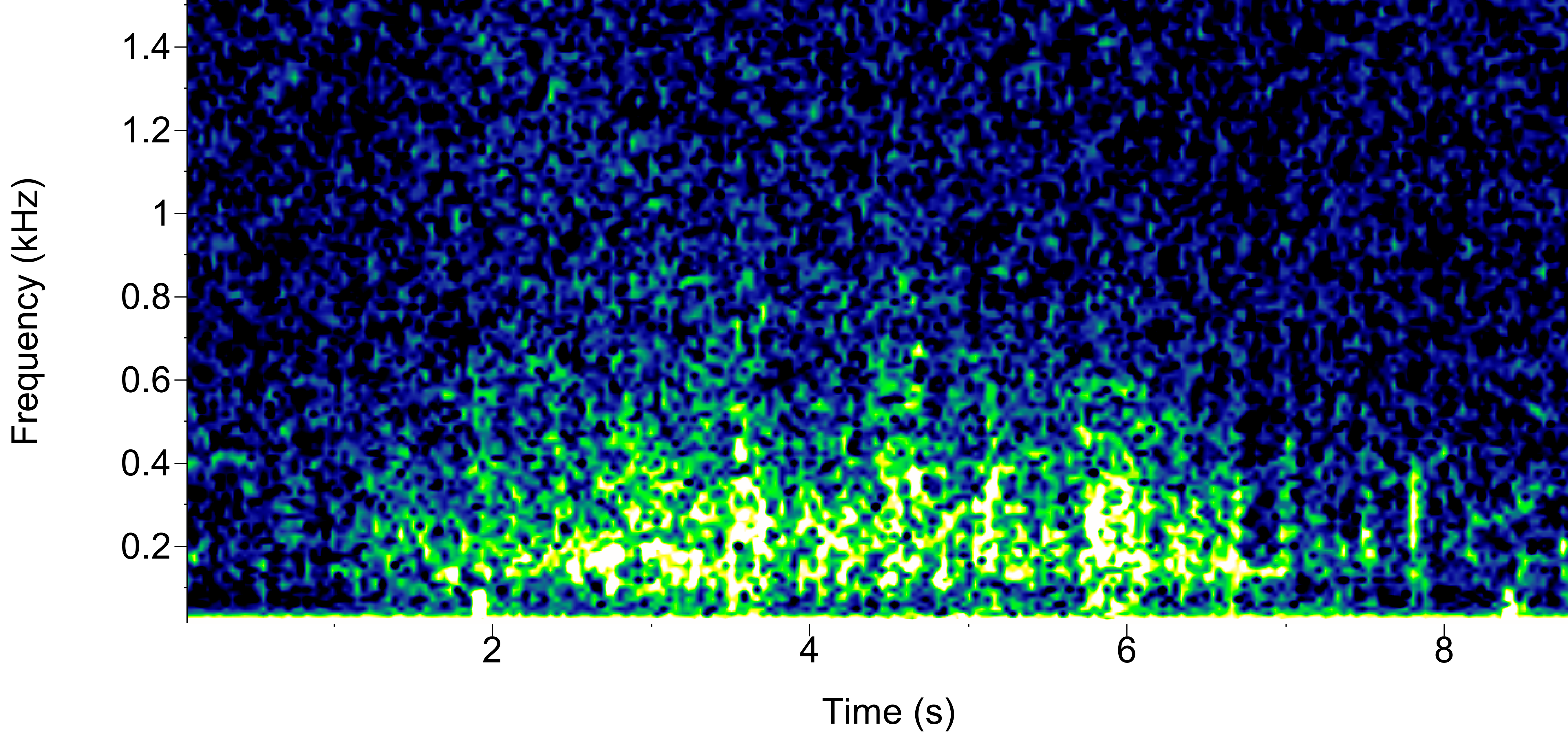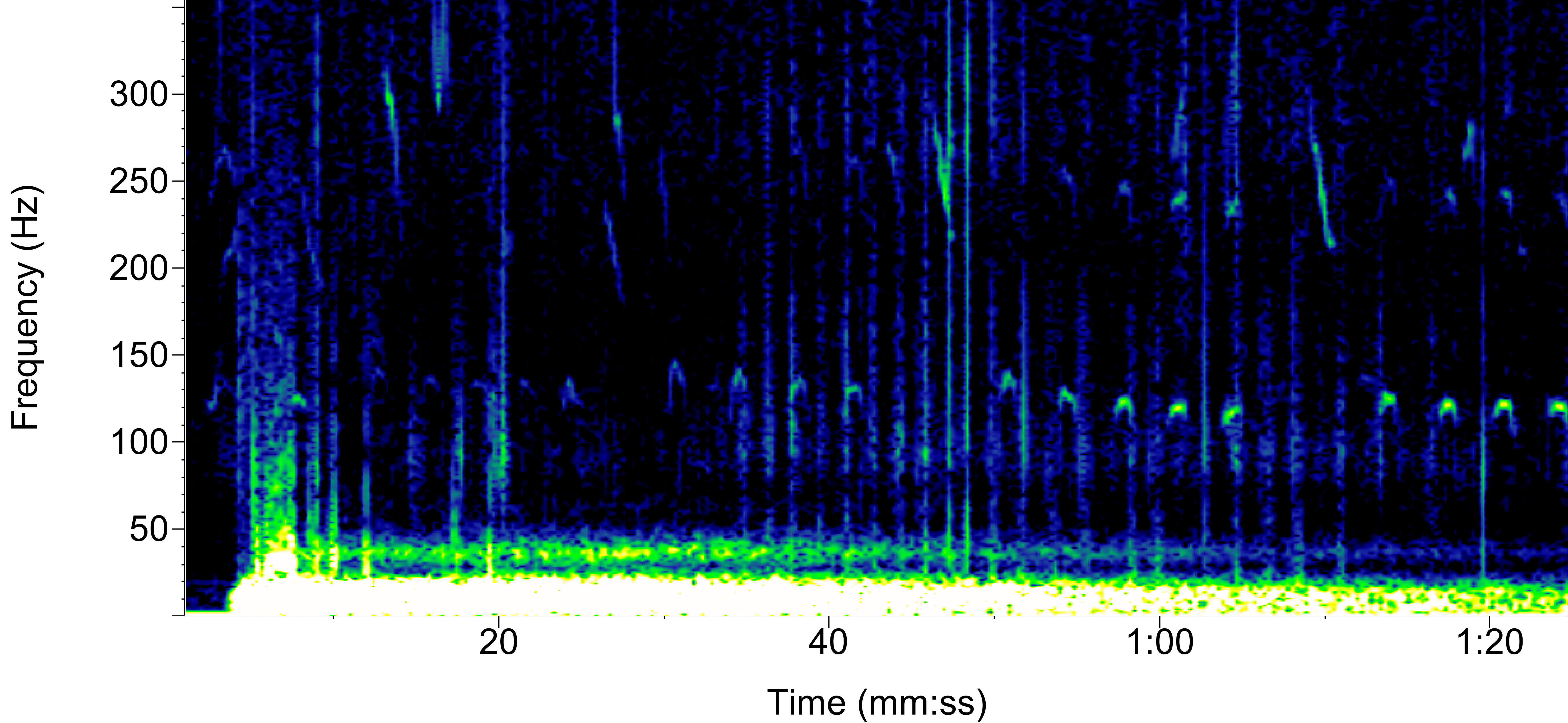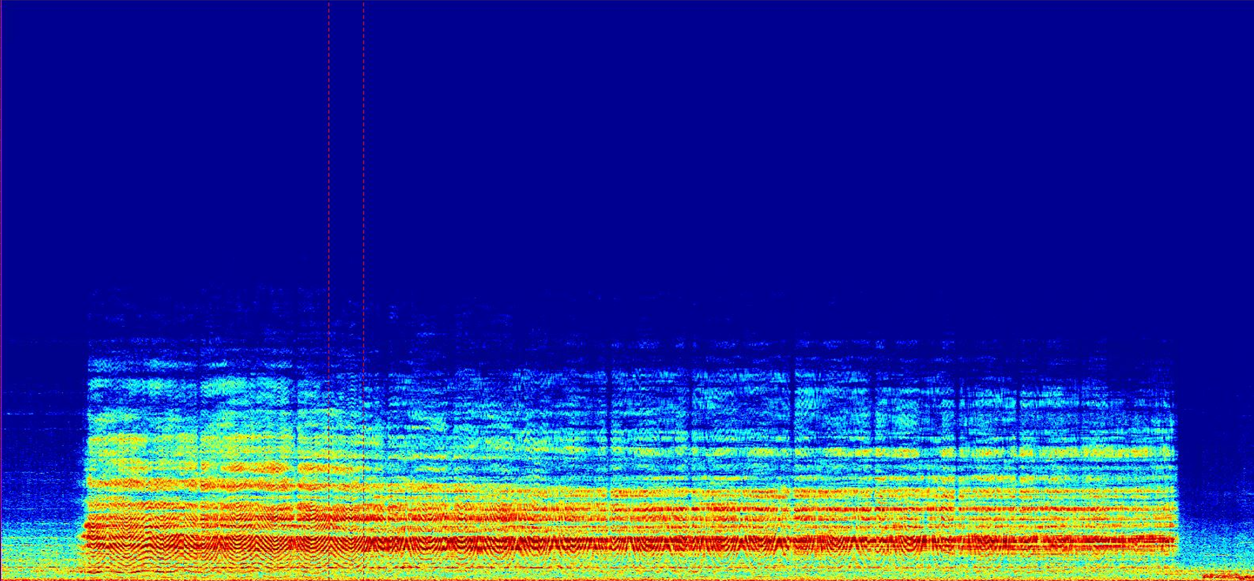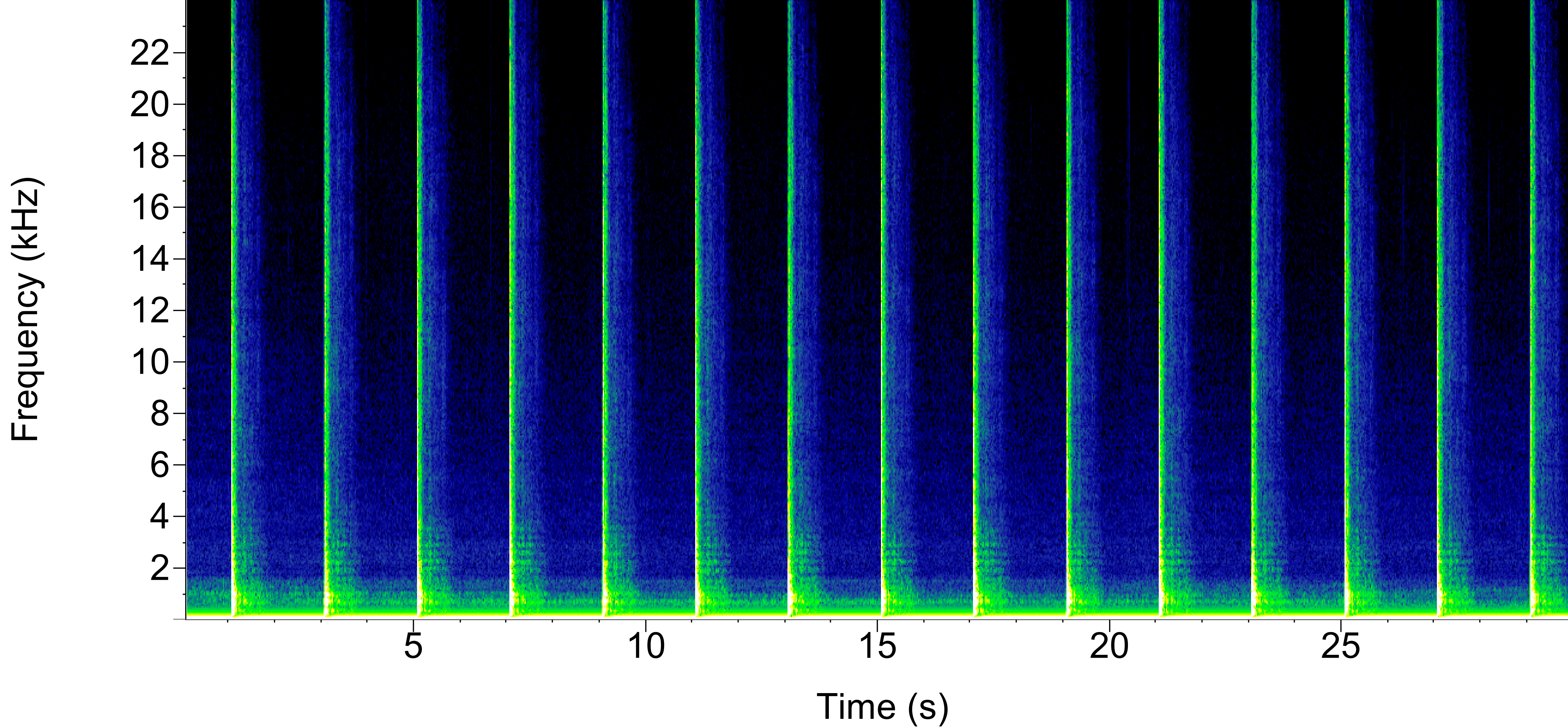Environmental and Anthropogenic sounds
NEFSC’s Passive Acoustic Branch (PAB) investigates underwater soundscapes and uses measurements of the soundscape to monitor for changes over time. Soundscapes include any sound contribution to an environment, including biological (reference our baleen, odontocete, fish/invert sound source pages for more detail on biological contributions to soundscapes), environmental, and anthropogenic sounds. The relative contributions of each of these types of sounds in marine environments are shifting as vessel traffic and offshore development increases on a global scale (Duarte et al. 2021, Frisk 2012, Hatch et al. 2009, Halpern et al. 2015), making soundscape monitoring vital to understand how organisms are responding. See below for common environmental and anthropogenic sounds monitored by PAB.
Environmental Sounds
Quiet Ocean (for reference)

Rain
Makara code: RAIN

Thunder
Makara code: THLI

Earthquakes
Makara code: N/A

Anthropogenic Sounds
Vessel

High Resolution Geophysical (HRG) sounds
High Resolution Geophysical (HRG) devices are used in surveys to map the seafloor for marine development. We are confident that HRG systems generated these sounds, based on the vessels and wind energy development in the area at the time of the recording.
Ex. 1:

- Spectrogram goes up to 32 kHz
Ex. 2

- Spectrogram goes up to 32 kHz
Echosounder
Makara code: ECHO
Echosounders are used to measure water depth by measuring the time it takes for the echosounder pulse to reach the bottom of the ocean and return to the source of production (typically a vessel or autonomous vehicle).

Pile Driver
Makara code: PIDR
Pile driving is used to install structural columns for offshore construction, primarily to create a sturdy platform for marine development projects. Pile driving produces repetitive, broadband, high amplitude pulses.

Seismic Surveys
Makara code: OI-S
Seismic surveying is a technique used to investigate sub-surface composition by sending loud pulses of sound into the seafloor and recording refraction waves as they return to the receiver. This is mainly used to search for underground oil reserves.
Resources
Carlos M. Duarte et al.(2021).The soundscape of the Anthropocene ocean.Science371.DOI:10.1126/science.aba4658
Frisk G. V. (2012). Noiseonomics: the relationship between ambient noise levels in the sea and global economic trends. Scientific reports, 2, 437. https://doi.org/10.1038/srep00437
Halpern, B., Frazier, M., Potapenko, J. et al. (2015). Spatial and temporal changes in cumulative human impacts on the world’s ocean. Nat Commun 6, 7615. https://doi.org/10.1038/ncomms8615
Hatch LT, Fristrup KM (2009) No barrier at the boundaries: implementing regional frameworks for noise management in protected natural areas. Mar Ecol Prog Ser 395:223-244. https://doi.org/10.3354/meps07945